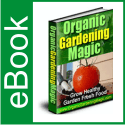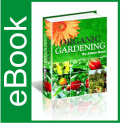Keeping Flower and Veg Seed from Your own Backyard
Keeping Flower and Veg Seed from Your own Backyard
Article by Wesley Mccormick
For many gardeners, the garden actually begins in January when the very first seed catalog arrives in the mailbox. While the cold wind howls outside, we retire to a cozy chair and leaf through the catalog, cautiously notating which varieties of lettuce and tomatoes to attempt and wishing we had the space to plant each and every and every flower so artfully displayed on its pages.
But have you ever wondered exactly where your great-grandparents acquired the seeds for their gardens, just before there were seed catalogs and fancy garden centers?
They saved seeds for the next year from their own gardens!
Saving seeds from your personal flowers or vegetables can be a great approach to completely encounter the cycle of plant growth. It is also much less costly than getting seeds each and every spring, and seeds saved from your plants will likely be properly suited to the peculiarities of one’s own garden’s growing situations.
Conserve seeds only from vigorous, healthy plants. Some plant illnesses could be harbored in the seed where it’ll then be passed on towards the subsequent generation of plants. So don’t conserve seeds from a plant that is obviously diseased or has struggled all season. Gather seeds from the plants that have the characteristics you want, like height, hardiness, early or late ripening, flavor or vigor.
Plants which are not hybrids are referred to as open pollinated. Numerous seed catalogs will determine which of their seeds are hybrids or open pollinated. Should you intend to save your own seed, usually commence with open pollinated seeds. Some of these may also be identified as heirloom seeds. These heirloom varieties have been passed down for generations, frequently saved inside of one particular loved ones for many years before becoming obtainable towards the general public.
It is not advised to save seeds from hybrid plants. Hybrids are the result of crossing two genetically various parent plants, both of which happen to be severely inbred to concentrate the desirable characteristics. The first generation, referred to as an F1 hybrid, is superior to the parents. But succeeding generations of plants grown from seed saved from an F1 plant have a tendency to randomly revert towards the characteristics from the authentic inbred ancestor plants.
Cross pollination is yet another concern for the seed-saving gardener. Cross pollination usually results in seeds which have a different genetic makeup than that of the parent plant. Pumpkins, squash and little gourds may possibly cross pollinate with one another, resulting in seeds which will develop to produce rather picturesque fruit. Sweet corn will cross pollinate with field corn or popcorn, as well as your 6-inch marigolds will cross along with your neighbor’s 18-inch pompon marigolds. However, crossing will only happen within a species. Cucumbers will not cross with squash, and cosmos won’t cross with pansies.
To prevent cross pollination, preserve two varieties of the exact same species separated by as a lot space as possible. Some species, like corn, are wind-pollinated and the pollen can travel fantastic distances. These plants need to be pollinated by hand and kept isolated from other varieties of their species. This may be completed with corn, for example, by tying a small paper bag more than selected ears prior to the silk emerges, then once the silk has appeared it’s hand pollinated with pollen from exactly the same plant or its wholesome neighbors.
Seeds needs to be collected on a dry, sunny day. Frost does not hurt most seed so long as the seed remains dry. Vegetables like cucumbers, peppers and tomatoes ought to be allowed to grow to be slightly overripe prior to their seeds are collected. Flower seeds and vegetable seed like lettuce should be collected following the seedheads have grow to be dry, but do not wait as well long, as many will shatter, meaning they’ll be dropped from the seedpod or seedhead if they remain on the plant too extended.
Cucumber, squash and tomato seeds need an additional step prior to they are ready for storage. Initial the seeds must be separated from the pulp, then dried. Scoop the seeds from these vegetables, pulp and all. Place the whole mess inside a container of water and give it a good stir, then let it settle a little. The pulp will rise for the top while the seeds will sink for the bottom. Carefully pour off the pulp, and repeat the process till a lot of the pulp has been poured off. Then strain out the seeds and set them on newspapers to dry.
Seeds should go into storage as dry as possible. Give all seed a post-harvest drying period of at least a week, just to become positive they’re dry. Spread them out on a paper plate or newspapers inside a warm region out from the sun whilst they dry.
It is very important to keep the seed dry during storage. Retailer your dry seeds in tightly sealed jars, metal film containers, or old vitamin bottles. To save space, smaller quantities of several varieties of seeds may be stored in separate envelopes inside a jar. A cool, but by no means freezing, garage, closed-off spare space or cool basement can all be great areas for storing seeds. Or simply keep your sealed jars of seeds within the refrigerator. Temperatures among 32 and 41 degrees Fahrenheit are excellent.
Try saving some vegetable or flower seeds from your garden this year and develop them subsequent season. This limitless cycle can permit you to understand the limitless joy of gardening by means of every one of the seasons and all of the stages of a plant’s life.
Be sure to label your jars and envelopes so when spring comes around again you’ll know which flower seeds and vegetable seeds you’re planting, and contain the date the seeds were collected. Some seeds will continue to be viable for several years, but most will develop best if planted right away the following spring.
About the Author
The author writes about various gardening subjects and has got a great vegetable seed selection in this innovative website. You’ll also find an excellent variety of flower and herb seed varieties and lots of information regarding gardening.

 December 18, 2011
December 18, 2011 







